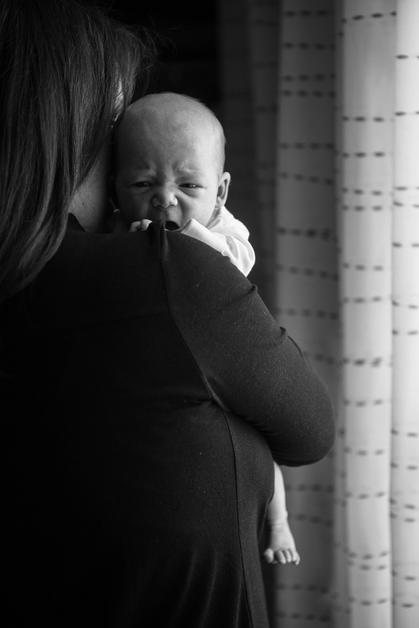Every parent at some point looks at their child, delicately sprawled on a mat, and wonders: At what age does a baby roll over? The anticipation can feel overwhelming—especially as weeks turn into months and you watch for every small nudge or twist that might signal the start of newfound independence. Questions surface relentlessly: Is my baby late? Is their muscle tone adequate? Would more tummy time help, or am I pushing too much? The journey of infancy is uniquely unpredictable, with each child developing at their own rhythm—sometimes in a flurry of leaps, other times through quiet, incremental change. If you, too, are listening for the gentle thud of a roll during playtime, uncertain when this milestone should appear, you’re not alone. This exploration sheds light on developmental timelines, physiological building blocks, encouraging strategies, and the scientific backdrop that parents crave for reassurance and actionable guidance.
Prepare to dive into at what age does a baby roll over, with discussions ranging from muscular development and neural coordination to safety essentials and individualized progression—because every journey, while distinct, deserves compassionate and evidence-based support.
Understanding Rolling Over: When Does the Magic Happen?
Curious about when that first, astonishing roll will happen? The question at what age does a baby roll over surfaces often in pediatric consultations. Most infants—according to longitudinal studies on infant motor milestones—begin by rolling from tummy to back between 4 and 6 months. Sometimes, gravity lends a helping hand as early as 3 months, particularly for babies born full-term and experiencing regular supervised tummy time.
However, the more challenging maneuver—from back to tummy—emerges closer to 5 or 7 months. This movement demands a sophisticated interplay of proprioceptive feedback (the sense of body position) and muscle activation in the neck, trunk, and shoulders. Why the variability? Genetics, temperament, exposure to floor-based play, and even birth circumstances (such as prematurity) all blend into the timeline.
Pause for a moment: Does an earlier roll mean advanced development? Not necessarily. Both ends of the spectrum can be perfectly healthy. Pediatric guidelines emphasize that a broad window is entirely expected, so watching for the constellation of related signs—rather than homing in on an exact week—offers more valuable insight into your child’s growing motor repertoire.
The Science Behind Rolling: Muscle, Coordination, and the Architecture of Movement
Let’s look under the hood. When you think about at what age does a baby roll over, it’s helpful to visualize the intricate symphony of gross motor skills at play. Rolling requires activation of the neck extensor muscles (to lift and turn the head off the floor), simultaneous engagement of the abdominal muscles (for core stability), and coordinated movement through the shoulder girdle and hips.
During those first tentative attempts, you might see your baby rock side to side, lift their chest on outstretched arms, or twist with both intention and surprise. These micro-movements indicate progressive neuromotor development: the maturation of brain pathways responsible for planning and executing physical actions.
And it’s not just about the brute strength. Sensory integration—how the brain processes feedback from the skin, muscles, and joints—helps babies gauge the push-and-pull needed to roll successfully. Every playful reach for a toy or attempt to scoot is wiring their nervous system, strengthening connections essential for crawling, sitting, and eventually walking.
Early Signs Your Baby Is Ready to Roll
The suspense peaks every play session: is today the day? Clues abound if you know what to watch for:
- Controlled head and neck movements: Your child lifts and turns their head easily during tummy time.
- Pressing up on forearms: Think of it as the “baby push-up”—a marker of growing postural control.
- Rocking, twisting, or side-arching: Those rolling attempts often start as a lateral shift before the full maneuver.
- Reaching across the midline: This not only builds coordination but also signals confidence in exploring both sides of the body.
- Pivoting or shifting weight: A subtle turn of the shoulder or gentle swiveling of the hips showcases emerging orientation and balance skills.
Encourage these micro-achievements—each one is a rehearsal, a neurological prep for the main event.
How to Encourage Rolling: Practical Strategies Grounded in Science
Wondering if there’s a secret formula to prompt rolling? The reality is gentler and less prescriptive—at what age does a baby roll over is influenced far more by opportunity than strict routines.
- Tummy time is foundational: Starting from birth, place your baby on their tummy for short, supervised spurts. Not only does this mitigate the risk of positional plagiocephaly (flat head), it powers up the neck and trunk muscles.
- Strategic toy placement: Lay out colorful, textured toys slightly out of comfortable reach. Curiosity becomes the best coach, naturally coaxing coordinated arm and body movements.
- Assisted rolling: Gently guide your baby’s hips or shoulders, demonstrating how rolling feels. This hands-on support can offer proprioceptive input—teaching body perception while respecting individual limits.
- Interactive play sessions: Enthusiastic smiles, clapping, and gentle verbal encouragement provide social reward and emotional security, reinforcing both effort and autonomy.
- Safe, open play areas: A soft mat or folded blanket ensures freedom of movement and reduces any fear of falling—key for spontaneous practice and body exploration.
The emphasis always returns to playful interaction—never force, always support.
What Factors Influence When Rolling Over Happens?
Each developmental journey is shaped by myriad forces. When wrestling with at what age does a baby roll over, consider:
- Muscle tone and nutritional status: Sound nutrition—especially once solids are introduced—underpins muscle health and overall energy required for movement. For infants with lower muscle tone (hypotonia), milestones may appear subtly later, warranting gentle encouragement and sometimes extra monitoring by health professionals.
- Practice and opportunity: Unstructured time on the floor is irreplaceable. Devices like swings or bouncers, while helpful in moderation, shouldn’t substitute genuine movement on a firm surface, where trial and error weave into skill mastery.
- Temperament and curiosity: Some babies are intrepid explorers, their movements marked by frequent, spirited attempts to reach new spaces. Others approach motor challenges methodically, observing before acting. Both profiles are normal; neither predicts later abilities or personality.
Safety Essentials as Babies Start to Roll
Suddenly, your once stationary child flips—from one moment to the next. Security now becomes non-negotiable as at what age does a baby roll over turns from theory to lived reality.
- Zero unattended moments on beds, couches, or changing tables. Rolls are notoriously unpredictable.
- Clear floor spaces of hazards: Small objects, cords, or loose fabrics can become dangerous within a second.
- Revisit sleep practices: If rolling appears (sometimes as early as 2 months!), stop swaddling to allow full movement. Sleep position remains supine (on the back), but once your baby can roll independently during sleep and the crib is hazard-free, there’s no need to reposition overnight.
- Home adaptations: Secure heavy furniture, install stair gates, and keep choking hazards well away. As new skills develop, so does the urge to explore every inch of terrain.
When to Consult a Pediatrician: Differentiating Variation From Concern
Most variations in at what age does a baby roll over are benign, simple markers of individuality. Still, vigilant observation can help flag potential issues early. Medical professionals suggest reaching out if:
- By 7 months, there’s no sign of attempts to roll or purposeful side-to-side movement.
- By 3-4 months, persistent floppiness (hypotonia) or significant stiffness is noted, particularly if your baby struggles to hold their head up.
- There’s a notable lack of engagement with toys, no coordinated reaching, or any loss of already demonstrated motor abilities.
Most delays are temporary, often self-resolving. Yet medical reassurance—alongside guidance for supportive interventions—can ease anxiety and foster optimal outcomes.
Key Takeaways
- At what age does a baby roll over? There’s a spectrum. Tummy-to-back typically appears between 4 and 6 months, back-to-tummy between 5 and 7 months, with wide individual differences.
- Rolling is a sophisticated achievement, rooted in the interplay of muscle strength, sensory integration, and cognitive curiosity—fundamental for future skills like sitting and crawling.
- Encourage development gently through daily tummy time, interactive games, engaging toys, and plenty of safe, uncluttered floor time. Foster joy, not pressure.
- If worries persist about your child not rolling by 7 months—or broader developmental concerns arise—discuss them with your healthcare provider. Remember: guidance is always available.
- Every achievement, no matter how seemingly small, is a story of persistence and growth. There is support—digital and human—every step of the way.
For tailored advice, milestone questionnaires, and evidence-based tips for your child’s wellbeing, download the Heloa app—your companion in pediatric health and parenting confidence.
Questions Parents Ask
Can a baby roll over too early, and should I be concerned?
It’s natural to feel surprised if your baby rolls over earlier than expected—sometimes as early as 2 months. This can be perfectly normal and simply reflect your child’s unique development. Early rolling isn’t usually a sign of a problem. However, if it happens alongside other unusual movements or in the context of significant muscle stiffness or floppiness, it may be helpful to mention it during a routine visit with your healthcare provider. Rassurez-vous, most babies develop at their own pace, and a little variation is entirely normal.
What should I do if my baby hasn’t started rolling over by 6 or 7 months?
If your baby hasn’t started rolling by 6 or 7 months, il est important de garder à l’esprit que chaque enfant évolue différemment. Many babies take a bit more time, especially if they are more relaxed by nature or were born a little early. Try to offer daily playtime on the floor and encourage free movement without pressure. If you’re worried or notice other delays in movement or social interaction, don’t hesitate to consult your pediatrician for guidance. There are always supportive resources to help both you and your child make progress, with plenty of encouragement along the way.
Are there ways to make rolling over safer for my baby?
Absolutely, il est essentiel de créer un environnement sûr dès que votre bébé commence à bouger davantage. Make sure the area where your child plays is soft, clear of small objects, and securely away from any drops or hard edges. Never leave your baby unattended on elevated surfaces, as movements can be sudden. Once rolling becomes part of their daily exploration, keep a close eye and adapt your home as needed to support this exciting new stage in complete safety.










